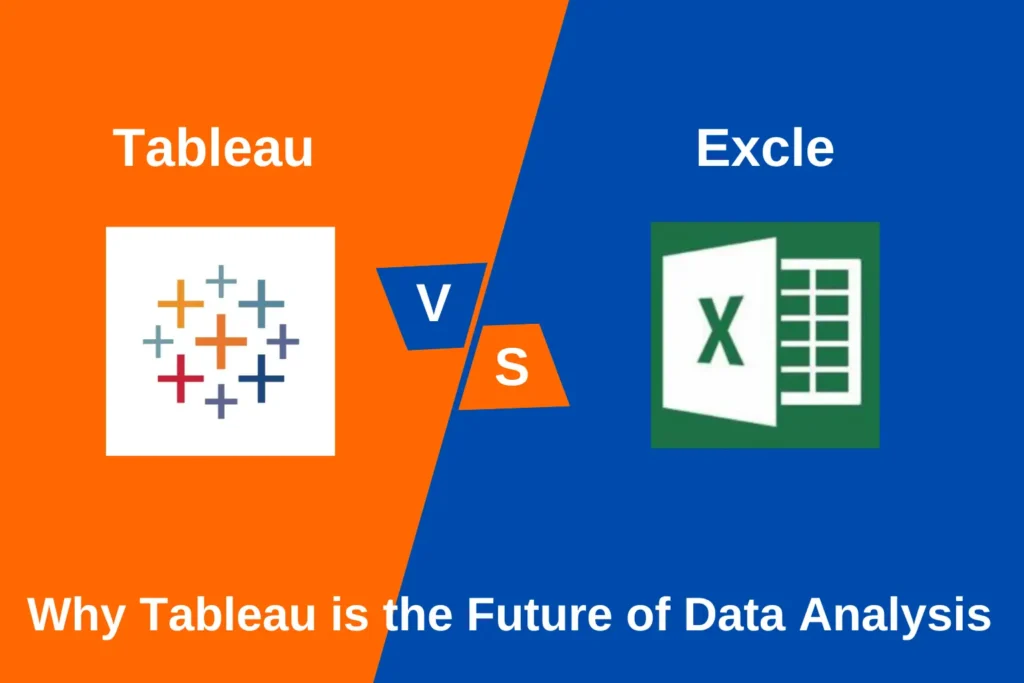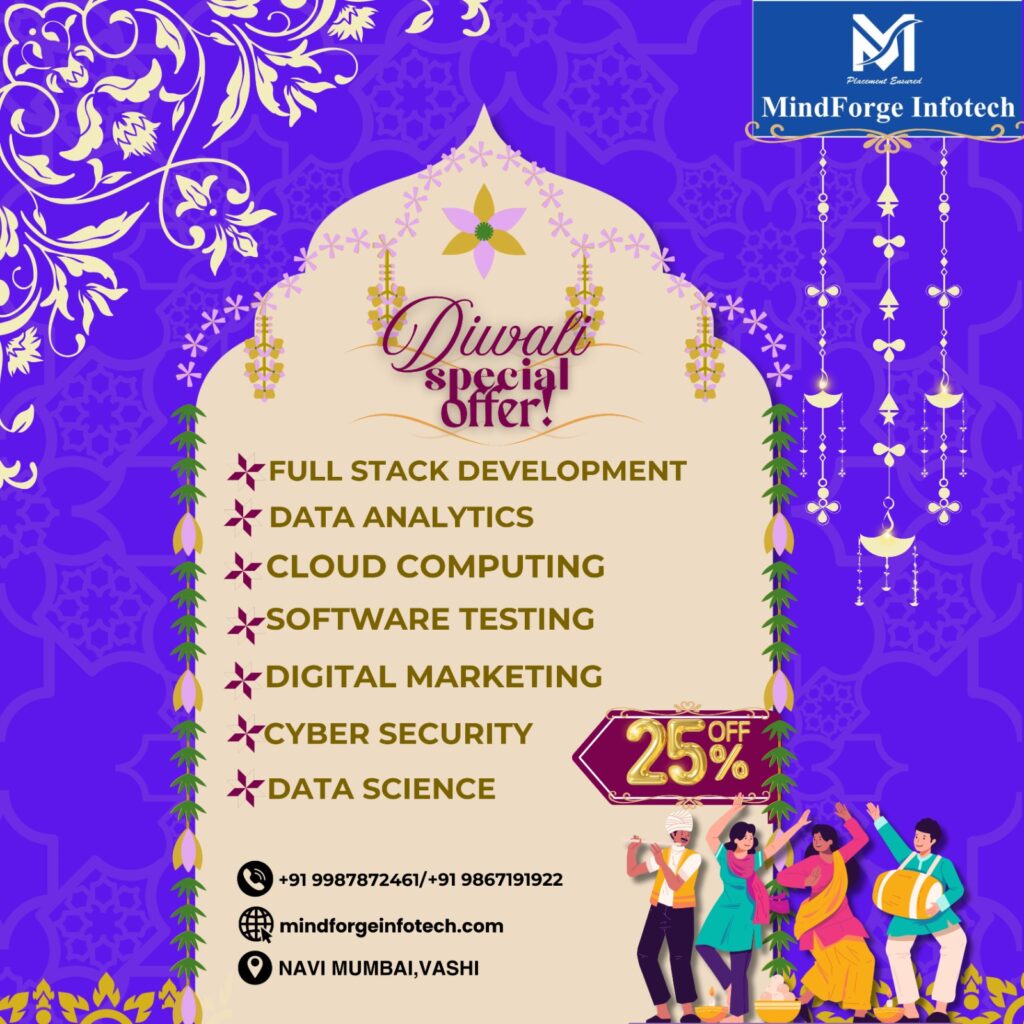
n the rapidly evolving landscape of data analysis, choosing the right tool can make a significant difference in how businesses and individuals derive insights from data. For years, Microsoft Excel has been the go-to tool for data analysis, offering a wide array of functionalities that cater to diverse user needs. However, with the advent of advanced tools like Tableau, the dynamics of data analysis have shifted dramatically. In this blog, we explore why Tableau is emerging as the future of data analysis and how it compares to Excel in key areas.
1. The Basics: Understanding Tableau and Excel
Excel: Microsoft Excel has been a staple in data analysis for decades. It’s a spreadsheet program that allows users to organize, analyze, and visualize data. Its versatility, ease of use, and extensive range of functions make it a favorite among professionals across various industries.
Tableau: Tableau, on the other hand, is a data visualization and business intelligence tool designed to help users analyze large datasets and create interactive, shareable dashboards. It’s built for scalability and is especially useful for handling complex data analysis tasks.
2. Key Differences Between Tableau and Excel
a. Data Visualization
Excel: While Excel has charting capabilities, creating visually appealing and interactive dashboards can be time-consuming. Users often need to manually format charts to achieve a professional look.
Tableau: Tableau excels in data visualization. With a drag-and-drop interface, users can create stunning, interactive dashboards in minutes. It offers a wide range of chart types and customization options that are far superior to Excel.
b. Handling Large Datasets
Excel: Excel struggles with large datasets, often slowing down or crashing when working with data that exceeds its row or column limits.
Tableau: Tableau is built to handle big data seamlessly. It connects directly to databases and can process millions of rows of data without performance issues.
c. Ease of Use for Advanced Analytics
Excel: Advanced analytics in Excel requires a steep learning curve, involving complex formulas, pivot tables, and sometimes VBA scripting.
Tableau: Tableau simplifies advanced analytics with built-in features like trend lines, clustering, and forecasting. Users can apply these analytics with a few clicks, without needing extensive technical knowledge.
d. Collaboration and Sharing
Excel: Sharing Excel files often involves emailing static spreadsheets, leading to version control issues.
Tableau: Tableau allows users to publish dashboards to Tableau Server or Tableau Public, enabling real-time collaboration. Stakeholders can interact with live dashboards, making collaboration seamless.
e. Integration with Other Tools
Excel: Excel integrates well with other Microsoft tools but requires additional plugins or scripts to connect with external databases and software.
Tableau: Tableau integrates effortlessly with a wide range of data sources, including databases, cloud platforms, and APIs. This makes it ideal for businesses with diverse data ecosystems.
3. Why Tableau is the Future of Data Analysis
a. Scalability and Performance
As organizations grow, so does their data. Tableau’s ability to handle vast amounts of data and connect to multiple data sources positions it as a scalable solution for businesses of all sizes. Excel, while powerful, cannot compete with Tableau’s performance in handling complex, large-scale datasets.
b. Advanced Features for Modern Needs
Tableau’s machine learning capabilities, natural language processing, and advanced predictive analytics make it a forward-looking tool. These features cater to the increasing demand for real-time insights and automation in data analysis.
c. Democratization of Data
Tableau’s user-friendly interface empowers non-technical users to explore and analyze data. This democratization of data analysis fosters a data-driven culture across organizations, breaking the dependency on specialized data teams.
d. Integration with Emerging Technologies
With the rise of cloud computing and artificial intelligence, Tableau’s seamless integration with cloud platforms like AWS, Google Cloud, and Microsoft Azure gives it a significant edge over Excel. These integrations enable businesses to harness the power of real-time data and analytics.
e. Community and Support
Tableau’s vibrant community of users and developers ensures continuous learning and support. With regular updates and a focus on innovation, Tableau stays ahead of industry trends, making it a future-proof investment.
4. When to Use Excel vs. Tableau
Despite Tableau’s advantages, Excel remains relevant in certain scenarios. Here’s a quick guide:
Scenario | Use Excel | Use Tableau |
Quick data entry and organization | ✔ |
|
Complex calculations and financial modeling | ✔ |
|
Creating interactive dashboards |
| ✔ |
Handling large datasets |
| ✔ |
Real-time collaboration |
| ✔ |
5. The Learning Curve: Excel vs. Tableau
Excel: Most professionals are familiar with Excel, making it easy to pick up and use for basic tasks. However, mastering advanced functionalities requires significant effort.
Tableau: Tableau’s intuitive interface makes it accessible to beginners. While advanced features may require training, the investment pays off in terms of productivity and insights.
6. Cost Considerations
Excel: Part of the Microsoft Office Suite, Excel is relatively inexpensive and often bundled with other tools. It’s a cost-effective solution for small businesses and individuals.
Tableau: Tableau’s pricing is higher, especially for enterprise editions. However, its value lies in its ability to drive deeper insights and improve decision-making, making it a worthwhile investment for organizations with complex data needs.
Conclusion
While Excel continues to be a reliable tool for data analysis, Tableau represents the future of the field. Its superior data visualization capabilities, ability to handle large datasets, and advanced analytics features make it indispensable in today’s data-driven world. Organizations looking to stay competitive should consider adopting Tableau to unlock new levels of efficiency and insight.
By embracing Tableau, businesses can transform their approach to data analysis, paving the way for innovation and growth in the years to come.
You may explore quality training on Python and SQL with us.
Know More: https://mindforgeinfotech.com/
